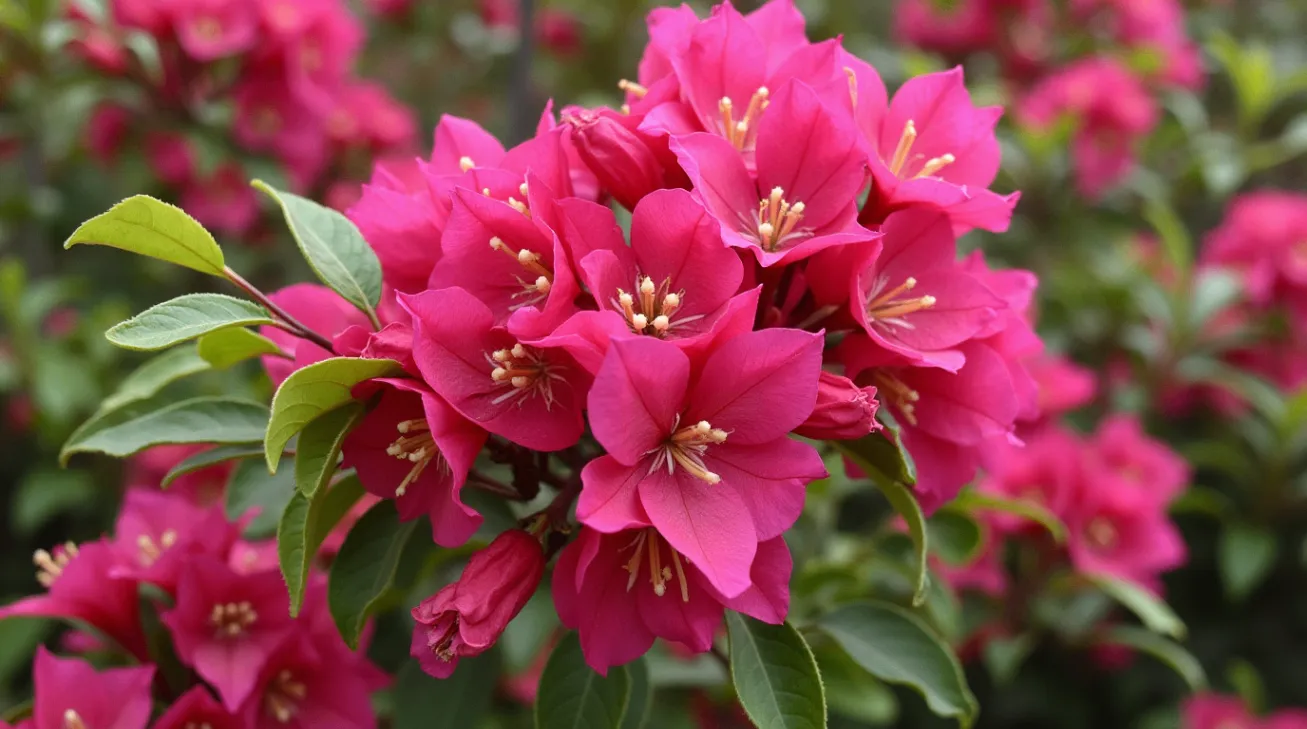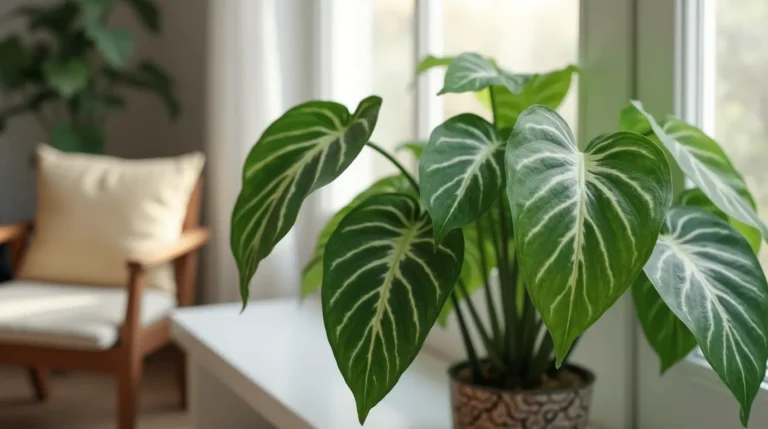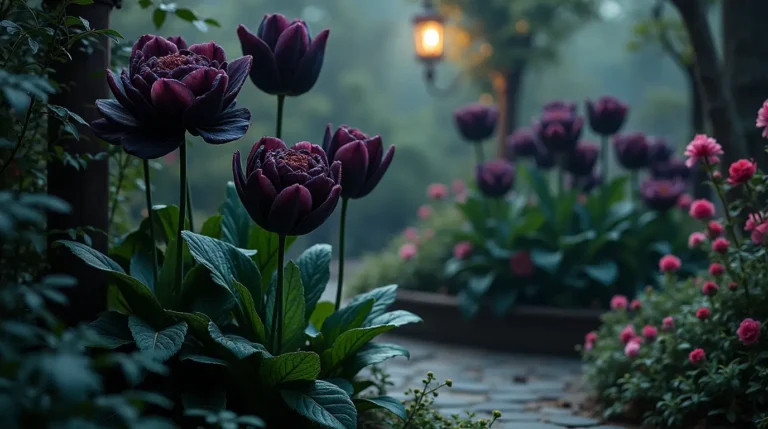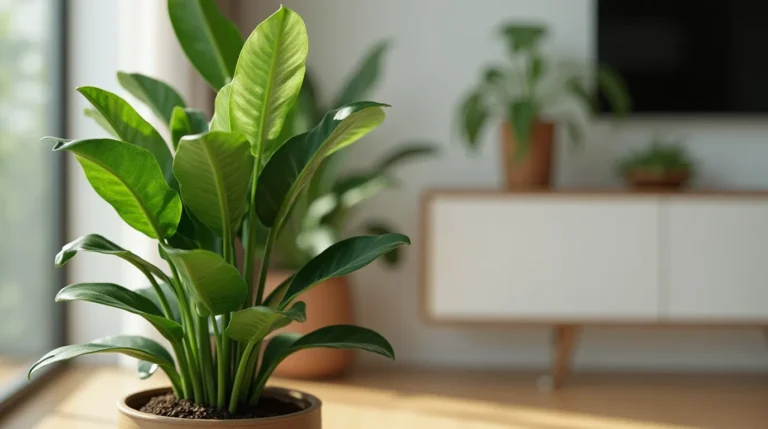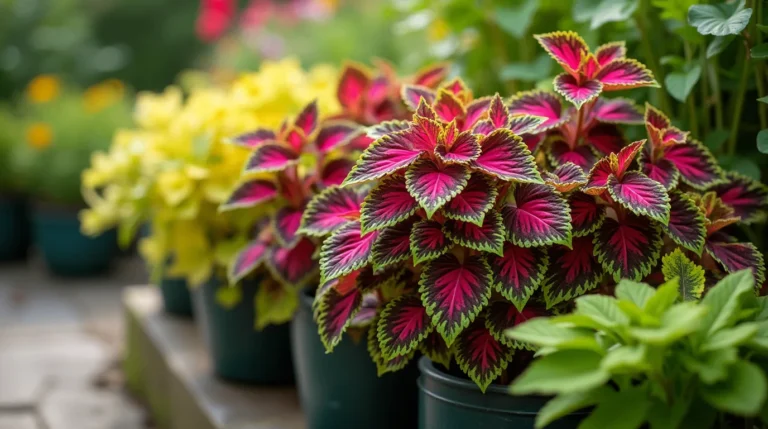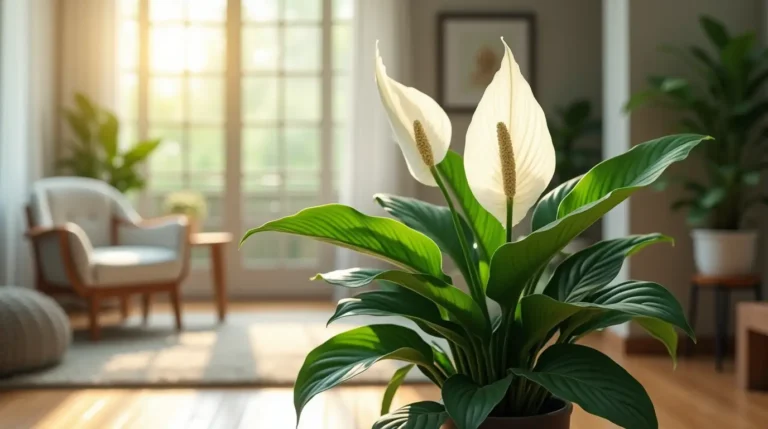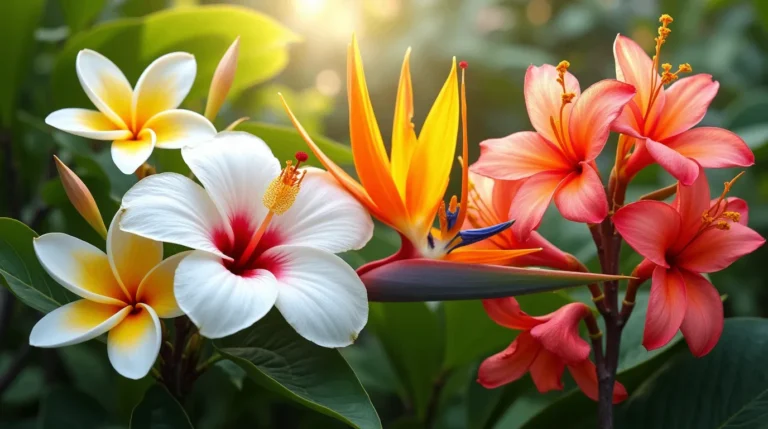Bougainvillea: 7 Easy Tips for Stunning Blooms
Bougainvillea is a favorite among gardeners for its bright colors and easy care. It’s perfect for beginners and experts alike. With the right care, bougainvillea can grow well in many places. This article will cover the basics of caring for bougainvillea, including planting, watering, and pruning. We’ll also share tips for fixing common problems and creating a beautiful display.
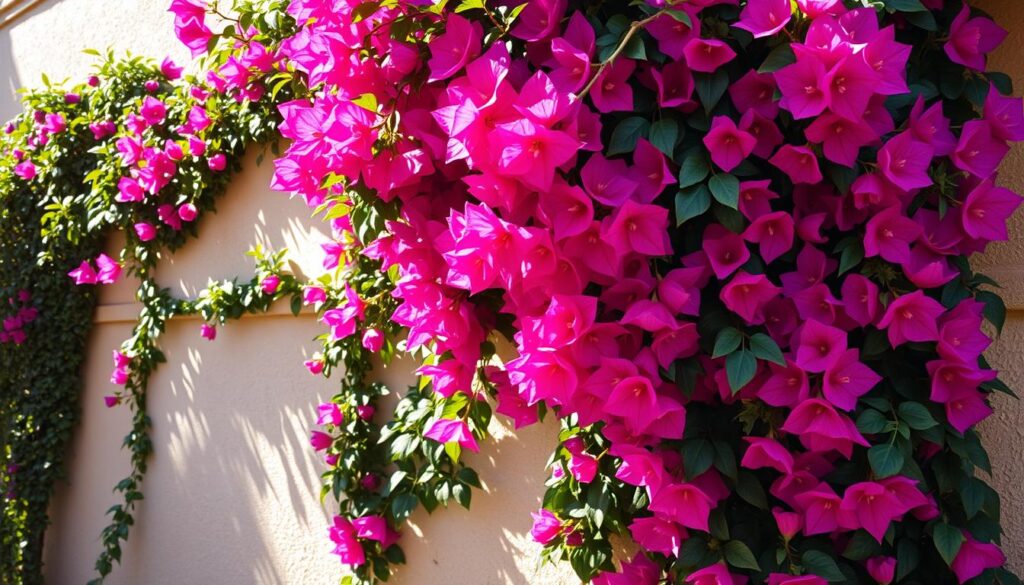
Key Takeaways
- Learn the basics of bougainvillea care to achieve stunning blooms
- Understand the importance of proper planting and watering techniques for bougainvillea
- Discover tips for pruning and training your bougainvillea for optimal growth
- Get advice on troubleshooting common issues with your bougainvillea
- Find out how to create a beautiful and thriving bougainvillea display
- Learn how to choose the right location and soil for your bougainvillea
Understanding Bougainvillea: A Tropical Beauty
Bougainvillea is a vibrant and stunning plant from South America. It’s known for its colorful, papery bracts. To grow well, it needs specific care.
Popular varieties like ‘Raspberry Ice’ and ‘California Gold’ show its beauty. Knowing its growth habits is key to a healthy bougainvillea tree.
Common Varieties and Colors
- Pink
- Purple
- Orange
- White
Growth Habits and Characteristics
The bougainvillea tree is easy to care for and grows fast. It produces bright colors and draws attention. It’s perfect for gardens and landscapes.
Climate Requirements
Bougainvillea loves warm weather and full sun. It’s great for tropical and subtropical areas. With the right care, it blooms beautifully.
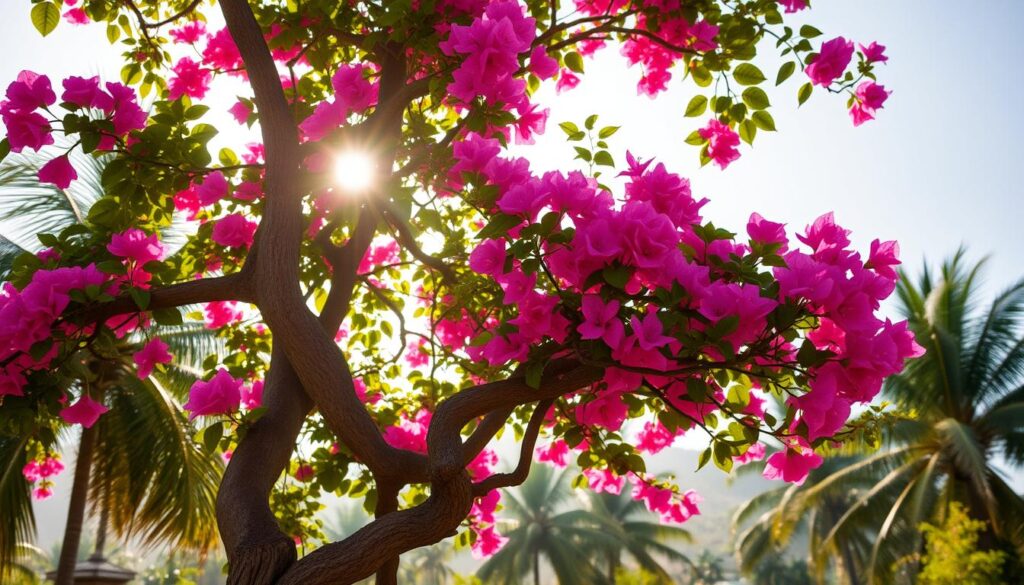
Selecting the Perfect Location for Your Bougainvillea
Choosing the right spot for your bougainvillea is key to its success. It loves full sun to partial shade, perfect for sunny spots. Also, pick a spot with soil that drains well to avoid root rot.
When picking a spot for your bougainvillea, keep these in mind:
- Climate: It thrives in warm weather, above 64°F (18°C).
- Soil: It needs well-draining soil with a pH of 6.0 to 7.0.
- Wind protection: It can get damaged by strong winds, so find a sheltered spot.
By thinking about these points, you can find the best spot for your bougainvillea. This way, you’ll enjoy its beautiful flowers.
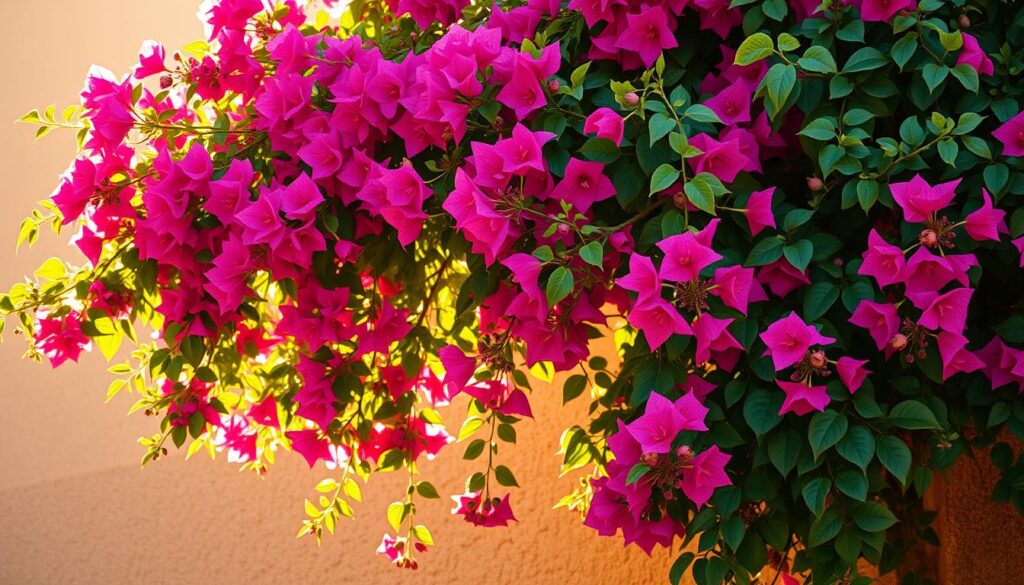
| Location | Climate | Soil |
|---|---|---|
| Full sun | Warm temperatures | Well-draining |
| Partial shade | Cooler temperatures | Moisture-retentive |
Bougainvillea is a flexible plant that can do well in many places. With the right care, it will bloom beautifully for you for months.
Essential Soil Requirements and Preparation
For a healthy bougainvillea tree, the right soil is key. The best soil mix is sand, silt, and clay, with a pH of 6.0 to 7.0. This mix ensures good drainage and aeration for the roots.
A well-draining soil is vital for bougainvillea. It prevents waterlogged soil and root rot. Adding compost or well-rotted manure improves the soil’s structure and fertility.
Ideal Soil Type
The perfect soil for bougainvillea has a few key traits:
- Good drainage
- High organic matter content
- pH between 6.0 and 7.0
Drainage Considerations
Drainage is crucial for bougainvillea. It stops waterlogged soil and root rot. To ensure good drainage, add gravel or broken pottery to the planting hole.
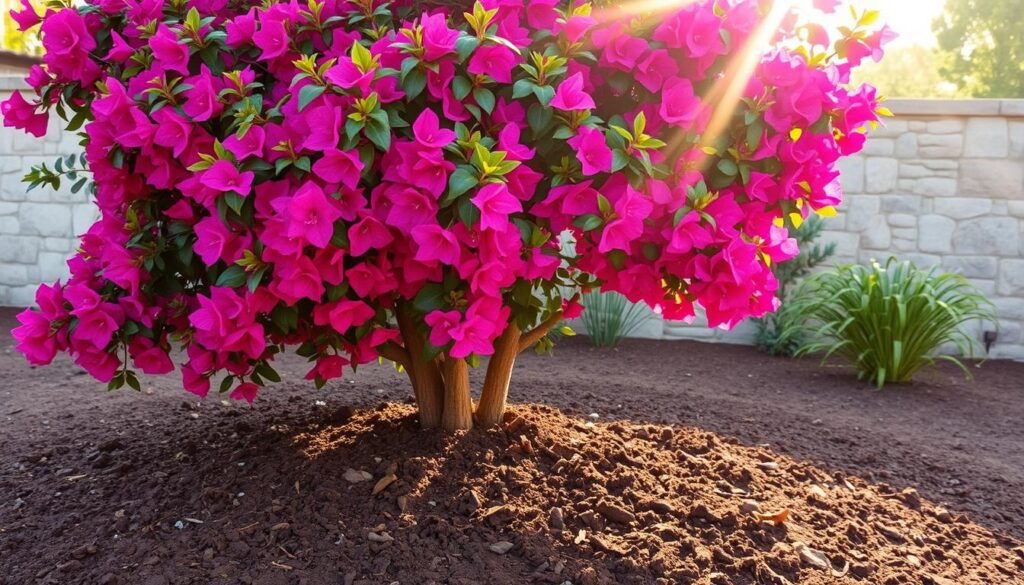
pH Balance Tips
To get the right pH for your bougainvillea, use a pH test kit. If the soil is off, add lime or sulfur to adjust it.
Planting Your Bougainvillea Successfully
When planting your bougainvillea, picking the right pot and soil is key. The pot should drain well and be 6-8 inches deep. This depth helps the plant’s roots grow. A mix of compost, perlite, and vermiculite is best for nutrients and drainage.
To plant, dig a hole that’s twice as wide and as deep as the plant’s roots. Gently take the plant out of its container and set it into the hole, ensuring the soil level matches its original depth. Fill the hole with soil, tamping it down to avoid air pockets. Water well after planting to settle the soil.
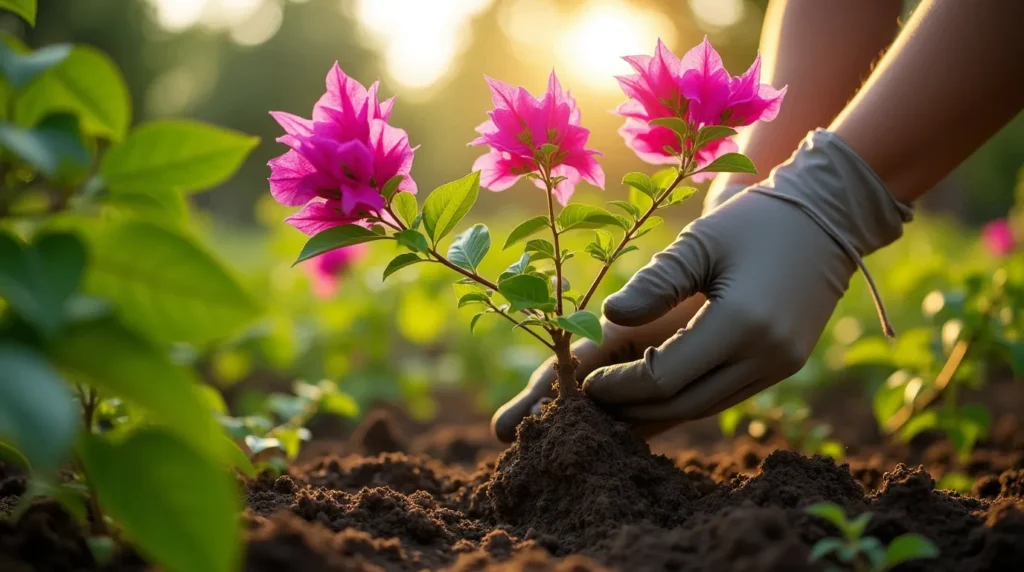
- Providing support for the plant as it grows, such as a trellis or stake
- Water regularly while avoiding overwatering to prevent root rot.
- Fertilize consistently to support healthy growth and abundant blooms.
By following these tips, your bougainvillea will thrive. You’ll enjoy its beautiful blooms for months.
| Planting Tips | Description |
|---|---|
| Choose the right pot | Select a pot that is well-draining and at least 6-8 inches deep |
| Prepare the soil | Mix compost, perlite, and vermiculite for optimal drainage and nutrients |
| Provide support | Use a trellis or stake to support the plant as it grows |
Watering Techniques for Optimal Growth
Watering your bougainvillea tree right is key to its health and growth. You need to water it enough but not too much. A well-watered tree will bloom brightly and do well.
Seasons change, and so does your tree’s water needs. In spring and summer, it needs more water because it’s warmer and growing fast. But in fall and winter, it needs less because it’s dormant.
Seasonal Watering Schedule
- Water your bougainvillea tree every 2-3 days during the spring and summer months.
- Reduce watering to once a week during the fall and winter months.
Signs of Over and Under-watering
Knowing when your tree needs more or less water is important. If its leaves are wilted or yellow, it’s thirsty. But if they’re droopy or falling, it’s getting too much water.
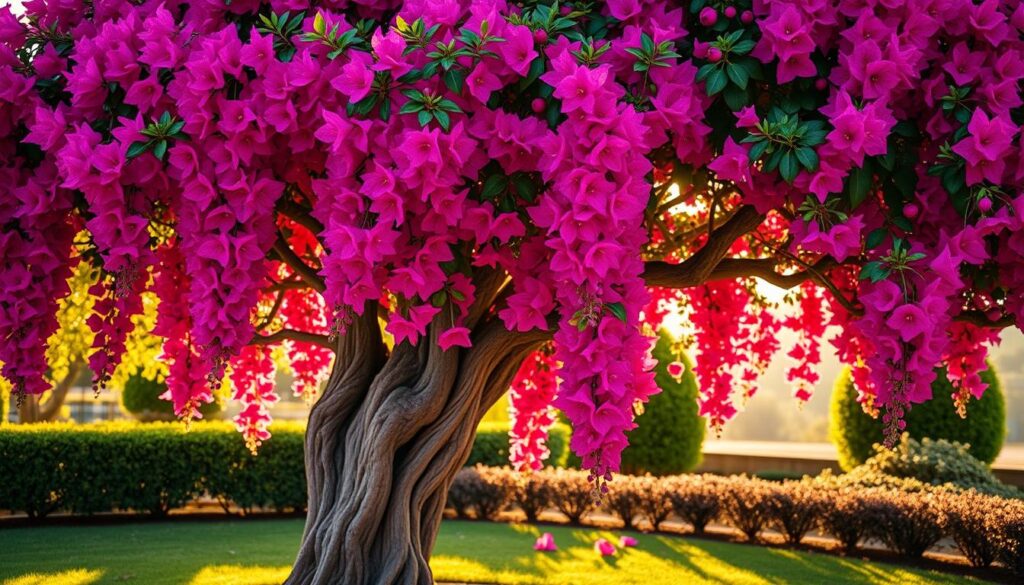
Drought Tolerance Management
Bougainvillea trees can handle some drought but still need water. Water them deeply but not often to help them grow strong roots. This helps them get through dry times.
| Season | Watering Frequency |
|---|---|
| Spring/Summer | Every 2-3 days |
| Fall/Winter | Once a week |
Mastering the Art of Bougainvillea Pruning
Pruning is key to keeping your bougainvillea healthy and blooming. Knowing the right time and method for pruning is essential. Regular pruning keeps your plant in shape and encourages new growth.
Here are a few helpful tips for pruning your bougainvillea:
- Prune your bougainvillea in the spring, after the last frost, to promote new growth and blooming.
- Remove any dead and damaged branches to prevent the spread of disease and encourage healthy growth.
- Cut back long branches to maintain the desired shape and size of your bougainvillea.
By following these tips and regularly pruning your bougainvillea, you can encourage healthy growth and beautiful blooming. Always use clean and sharp pruning tools to prevent damaging the plant. With proper care and pruning, your bougainvillea will thrive and provide you with stunning blooms for months to come.
Fertilizing for Maximum Bloom Production
To help your bougainvillea tree grow well and bloom more, fertilizing is key. A well-fed tree will show off vibrant colors and look lush. You can choose from organic or inorganic fertilizers.
Types of Fertilizers
Organic fertilizers, like compost or manure, give nutrients slowly. This keeps your plant fed over time. Inorganic fertilizers, however, give a quick nutrient boost. For bougainvillea trees, a balanced fertilizer with equal nitrogen, phosphorus, and potassium is best.
Application Timeline
The best time to fertilize your bougainvillea tree is in spring to fall. Fertilize every 4-6 weeks. But, don’t overdo it, as too much can harm your plant. Start with a little fertilizer and add more as needed.
Common Fertilizing Mistakes
One big mistake is overfertilizing. Another is fertilizing at the wrong time, like when the tree is dormant. To avoid these, always follow the fertilizer instructions and know your tree’s needs.
| Fertilizer Type | Application Frequency | Benefits |
|---|---|---|
| Organic | Every 4-6 weeks | Slow release of nutrients, promotes healthy growth |
| Inorganic | Every 2-3 weeks | Immediate boost of nutrients, promotes blooming |
By following these tips and avoiding common mistakes, your bougainvillea tree will thrive. It will bloom beautifully for you to enjoy.
Training Your Bougainvillea Tree for Shape and Support
Training your bougainvillea tree is key to its health and beauty. It helps the plant grow well and bloom more. To do this, you need to support it, prune it, and shape it as you like. Use a trellis or stake for support and prune to keep the shape right.
Here are some tips for training your bougainvillea tree:
- Provide support with a trellis or stake as it grows.
- Prune the branches to keep a shape and promote growth.
- Prune regularly to encourage the shape you want.
By following these tips, you can shape your bougainvillea tree and support it. This will help it grow healthy and bloom well. Your bougainvillea tree will then be a beautiful part of your garden or landscape.
With the right care and training, your bougainvillea tree will be a stunning addition. It will bring beauty with its blooms and unique shape. Follow these tips to help your bougainvillea tree thrive and enjoy its beauty for many years.
Creating a Stunning Bougainvillea Bonsai
To make a stunning bougainvillea bonsai, patience and dedication are key. This art form needs careful attention and a desire to learn. A bougainvillea bonsai can add beauty to any home or garden, showing off vibrant colors and textures.
Shaping a bougainvillea bonsai involves several important techniques. These include:
- Pruning: Regular pruning keeps your bonsai tree’s shape and size right.
- Training: Use wires and careful pruning to train your bonsai to grow in a certain way.
- Container selection: The right container is vital for your bonsai’s health and look.
A well-made bougainvillea bonsai is a true work of art. It has bright colors and a delicate shape. To keep your bonsai healthy, follow a regular care routine. This includes watering, fertilizing, and pruning. By doing these things, you can create a beautiful bougainvillea bonsai that will make your life more joyful.
| Technique | Description |
|---|---|
| Pruning | Regular pruning to maintain shape and size |
| Training | Training the tree to grow in a specific shape or direction |
| Container selection | Choosing the right container for the tree’s health and appearance |
Common Pests and Diseases
Bougainvillea plants face many pests and diseases. These can harm their growth and beauty. Aphids, whiteflies, and spider mites are frequent garden pests. They damage leaves and flowers and spread diseases.
It’s key to check your bougainvillea often. Act fast if you see any problems. Here are a few pests and diseases to keep an eye on:
- Aphids are tiny, soft-bodied pests that suck sap from plants.
- Whiteflies: tiny, winged insects that feed on plant sap and can transmit diseases
- Spider mites: tiny, spider-like insects that feed on plant sap and can cause yellowing of leaves
- Root rot: a fungal disease that can cause the roots to rot and the plant to decline
To fight pests and diseases, use insecticidal soap, neem oil, and fungicides. Keeping your garden clean and well-ventilated is also crucial.
Preventing pests and diseases is key to healthy bougainvillea. Regular checks and care can prevent many issues. This way, your bougainvillea will keep blooming beautifully.
| Pest/Disease | Symptoms | Treatment |
|---|---|---|
| Aphids | Curled leaves, sticky substance on leaves | Insecticidal soap, neem oil |
| Whiteflies | Yellowing leaves, sticky substance on leaves | Insecticidal soap, neem oil |
| Root rot | Yellowing leaves, soft stems | Fungicides, improve drainage |
Winter Care and Protection
As winter comes, your bougainvillea tree needs special care. This tropical plant can’t handle frost or cold. So, it’s key to protect it during these months.
To shield your bougainvillea from frost, you can cover it with a sheet or blanket. Or, bring potted plants inside. Frost blankets are also a good option. Don’t water your bougainvillea in winter, as it can rot the roots.
Frost Protection Methods
- Covering the plant with a sheet or blanket
- Bringing potted plants indoors
- Using frost blankets specifically designed for plants
Indoor Winter Care
When moving your bougainvillea inside, give it lots of light. Keep the room warm, between 60-70°F (15-21°C). Water it only once a month, since it’s dormant.
With the right care, your bougainvillea will bloom beautifully when spring arrives. It will add beauty to your garden or indoor space.
| Month | Temperature | Watering |
|---|---|---|
| December | 60-70°F (15-21°C) | Once a month |
| January | 60-70°F (15-21°C) | Once a month |
| February | 60-70°F (15-21°C) | Once a month |
Propagation Methods and Tips
Sharing bougainvillea plants with others or growing more for your garden is rewarding. You can use stem cuttings, layering, or division to propagate bougainvillea. It’s key to pick healthy stems and give them the right environment.
Here are some tips for successful bougainvillea propagation:
- Taking 4-6 inch stem cuttings from the tips of new growth
- Removing lower leaves and dipping the cut ends in rooting hormone
- Planting the cuttings in well-draining soil and keeping them moist
By following these steps and choosing the right method, you can grow more bougainvillea. This will let you enjoy its stunning flowers for many years.
| Propagation Method | Description |
|---|---|
| Stem Cuttings | Taking 4-6 inch stem cuttings from the tips of new growth |
| Layering | Bending a long stem to the ground and securing it with a rock or soil |
| Division | Dividing the roots of a mature plant to create new plants |
Troubleshooting Common Growth Issues
As a bougainvillea tree owner, you might face some common growth issues. These can include leaf problems, blooming issues, and root health problems. It’s key to find the cause and fix it.
Yellowing leaves often mean too much water. Not enough blooms can be due to lack of sunlight. Poor root health can happen if the soil doesn’t drain well.
Leaf Problems
Leaf issues can stem from pests, diseases, or stress. Regularly check your bougainvillea for signs of pests or diseases.
Blooming Issues
Blooming problems can be a letdown. Ensure your plant gets enough sunlight and water to bloom well.
Root Health
Good root health is vital for your bougainvillea. Use soil that drains well and avoid too much water. Fertilizing regularly helps roots grow strong.
By following these tips and acting quickly, you can avoid common growth issues. This will keep your bougainvillea tree healthy and vibrant.
Conclusion: Growing Your Best Bougainvillea
As we wrap up our exploration of bougainvillea, it’s clear that with the right care, you can grow stunning blooms. We’ve covered key steps like choosing the right spot and how to prune and fertilize. These tips will help you grow your best bougainvillea bonsai tree.
Bougainvillea love warm, sunny spots. Give them the right soil, water them regularly, and keep up with maintenance. This way, you’ll enjoy their beautiful colors and flowers. Feel free to try different varieties and training methods to match your garden or patio.
Keep sharing your bougainvillea adventures and advice with others. Join local gardening groups, online forums, and explore resources to improve your skills. Happy growing!
FAQ
What are the most common varieties of bougainvillea?
Popular bougainvillea varieties include ‘Raspberry Ice’, ‘California Gold’, ‘Elizabeth Angus’, and ‘Torch Glow’. They come in colors like pink, purple, orange, and white.
What are the climate requirements for growing bougainvillea?
Bougainvillea loves warm, sunny spots. It grows best in USDA zones 9-11. It needs full sun to partial shade but can’t handle frost.
What type of soil does bougainvillea prefer?
Bougainvillea likes soil that drains well and is rich in nutrients. The pH should be slightly acidic to neutral, between 6.0 and 7.0.
How often should I water my bougainvillea?
Watering needs change with the seasons. Keep the soil moist but not soggy in the growing season. Let it dry a bit in winter. Watch your plant and adjust watering as needed.
When is the best time to prune my bougainvillea?
Prune in late winter or early spring. This encourages new growth and more flowers. It also helps shape the plant.
How can I train my bougainvillea to grow in a tree form?
Choose a strong stem and remove other shoots. Prune lower branches for a clear trunk. Use a trellis or stake for support.
What are the key steps for creating a bougainvillea bonsai?
Pick a compact variety and the right pot. Use specific pruning and training. Regularly trim roots, wire branches, and prune carefully.
How can I protect my bougainvillea from pests and diseases?
Watch out for aphids, whiteflies, and mealybugs. Use organic soaps or neem oil to fight them. Root rot is a risk, so ensure good drainage and avoid too much water.
How can I propagate my bougainvillea to create new plants?
Propagate through stem cuttings, layering, or division. Take cuttings in spring or summer, treat with rooting hormone, and plant in well-draining soil. Layering and division also work well.

